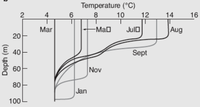
Photo from wikipedia
Organic photodetectors offer distinct advantages over their inorganic analogues, most notably through optical transparency and flexibility, yet their figures-of-merit still lag behind those of inorganic devices, and optimization strategies generally… Click to show full abstract
Organic photodetectors offer distinct advantages over their inorganic analogues, most notably through optical transparency and flexibility, yet their figures-of-merit still lag behind those of inorganic devices, and optimization strategies generally encounter a trade-off between device responsivity and bandwidth. Here we propose a novel photodetector architecture in which an organic photoactive semiconductor layer (S) is sandwiched between two thick insulating layers (I) that separate the semiconductor from the metallic contacts (M). In this architecture a differential photocurrent response is generated purely from the polarization of the active layer under illumination. Especially for an asymmetric MISIM design, where one insulating layer is a high-k ionic liquid IIL and the other a low-k polymer dielectric Ip, the responsivity/bandwidth trade-off is broken, since the role of the IIL in efficient charge separation is maintained, while the total device capacitance is reduced according to Ip. Thus the benefits of single insulating layer differential photodetectors (MISM) using either IIL or Ip are combined in a single device. Further improvements in device performance are also demonstrated by decreasing the series resistance of the photoactive layer through semiconductor:metal blending and by operation under strong background light.
Journal Title: Scientific Reports
Year Published: 2018
Link to full text (if available)
Share on Social Media: Sign Up to like & get
recommendations!